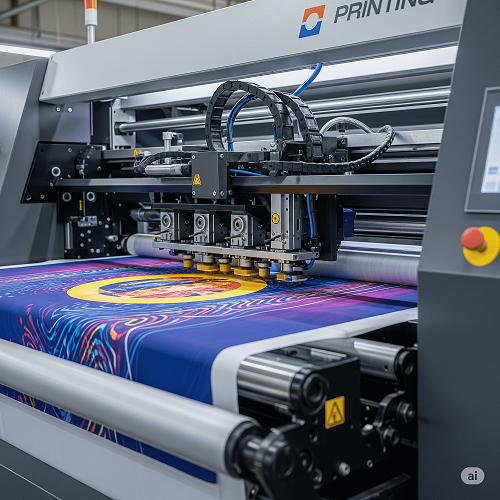In the ever-evolving world of fashion and textile design, creativity is paramount. Designers are constantly seeking innovative ways to express their ideas and bring their visions to life. One of the most significant advancements in this field is the advent of digital textile printing. This technology has revolutionized the way fabrics are printed, offering numerous benefits that enhance creativity. In this article, we will explore the advantages of digital textile printing, particularly focusing on how it empowers designers and manufacturers, especially in regions like Surat, known for its vibrant textile industry.
1. Unlimited Design Possibilities
One of the most compelling benefits of digital textile printing is the freedom it offers in design. Unlike traditional methods, which often require screens or plates for each color, digital printing allows for intricate and complex designs to be printed directly onto the fabric. This means that designers can experiment with a wide range of colors, patterns, and images without the constraints of traditional printing methods.
With digital textile printing, the only limit is the designer’s imagination. Whether it’s a detailed floral pattern, a geometric design, or a unique artwork, a digital textile printer can reproduce it with precision and vibrancy. This capability is particularly beneficial for fashion designers who want to create unique, one-of-a-kind pieces that stand out in a crowded market.
2. Shorter Production Times
In the fast-paced fashion industry, time is of the essence. Digital textile printing significantly reduces production times compared to traditional methods. With traditional printing, the setup process can be lengthy, involving the creation of screens and other materials. In contrast, digital printing allows for direct printing from a digital file, eliminating many of these steps.
This efficiency means that designers can bring their ideas to market more quickly, responding to trends and consumer demands in real-time. For businesses in Surat, where the textile industry is booming, this speed can be a crucial competitive advantage. By utilizing digital textile printing machines, manufacturers can meet tight deadlines and fulfill orders faster, ultimately increasing customer satisfaction.
3. Cost-Effective for Small Runs
Traditionally, printing methods like screen printing are cost-effective only for large production runs due to the high setup costs. However, digital textile printing changes this dynamic. It is ideal for small to medium-sized runs, making it accessible for independent designers and small businesses.
With a digital textile printer in Surat, designers can produce limited edition collections or custom pieces without incurring prohibitive costs. This flexibility encourages creativity, as designers can experiment with new ideas without the fear of financial loss associated with large production runs.
4. Eco-Friendly Printing
Sustainability is a growing concern in the fashion industry, and digital textile printing offers a more eco-friendly alternative to traditional methods. Digital printing uses less water and generates less waste, as it only applies ink where it is needed. Additionally, many digital textile printers utilize water-based inks, which are less harmful to the environment compared to the solvents used in traditional printing processes.
For designers who prioritize sustainability, using digital textile printing machines aligns with their values and appeals to environmentally conscious consumers. This commitment to eco-friendly practices can enhance a brand’s reputation and attract a loyal customer base.
5. Customization and Personalization
In today’s market, consumers increasingly seek personalized products that reflect their individual tastes. Digital textile printing makes it easy to offer customization options. Designers can create unique prints for individual clients or small groups, allowing for a level of personalization that traditional methods cannot match.
This capability is particularly advantageous for businesses in Surat, where there is a rich tradition of textile craftsmanship. By incorporating digital textile printing, local designers can blend traditional techniques with modern technology, offering customers bespoke products that celebrate both heritage and innovation.
6. High-Quality Prints
Quality is a critical factor in textile design, and digital printing delivers exceptional results. Digital textile printers can produce high-resolution images with vibrant colors and intricate details. This level of quality is essential for designers who want their work to stand out and make a lasting impression.
Moreover, digital printing allows for better color accuracy and consistency across different fabric types. This reliability ensures that designers can trust the final product will match their original vision, which is crucial for maintaining brand integrity.
7. Easy Prototyping
For designers, the ability to create prototypes quickly is invaluable. Digital textile printing allows for rapid prototyping, enabling designers to test their ideas and make adjustments before committing to larger production runs. This iterative process fosters creativity, as designers can experiment with different designs, colors, and fabrics without significant investment.
In Surat, where the textile industry is known for its innovation, the ability to prototype quickly can lead to the development of cutting-edge designs that push the boundaries of traditional textile art.
Conclusion
Digital textile printing has transformed the landscape of textile design, offering numerous benefits that enhance creativity and innovation. From unlimited design possibilities and shorter production times to eco-friendly practices and high-quality prints, this technology empowers designers to bring their visions to life in ways that were previously unimaginable.
For businesses in Surat, investing in digital textile printing machines can provide a competitive edge in a rapidly changing market. By embracing this technology, designers can maximize their creativity, respond to consumer demands, and contribute to a more sustainable future in the textile industry. As the world of fashion continues to evolve, digital textile printing will undoubtedly play a pivotal role in shaping the future of design.

